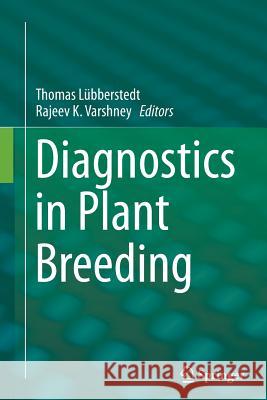Diagnostics in Plant Breeding » książka
topmenu
Diagnostics in Plant Breeding
ISBN-13: 9789400794733 / Angielski / Miękka / 2015 / 521 str.
Diagnostics in Plant Breeding
ISBN-13: 9789400794733 / Angielski / Miękka / 2015 / 521 str.
cena 805,10
(netto: 766,76 VAT: 5%)
Najniższa cena z 30 dni: 771,08
(netto: 766,76 VAT: 5%)
Najniższa cena z 30 dni: 771,08
Termin realizacji zamówienia:
ok. 22 dni roboczych
Dostawa w 2026 r.
ok. 22 dni roboczych
Dostawa w 2026 r.
Darmowa dostawa!
This book examines the development and application of molecular tools for the prediction of plant performance.











